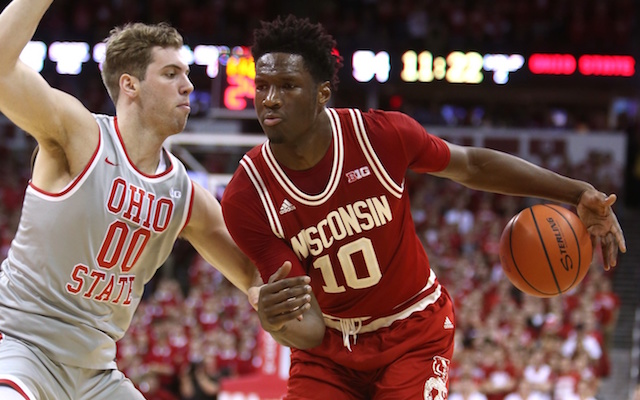When Bo Ryan abruptly announced his retirement after a 64-49 victory over Texas A&M Corpus Christi on December 15, the Badgers were just a measly 7-5 with quite a few bad losses on their resume. Flash-forward to today and it's a much different story. While Wisconsin's record under interim head coach Greg Gard (9-4) might not indicate much of an improvement, it's clear they've been making monumental strides on both sides of the ball.
If you've been following Wisconsin basketball for a while, you've probably heard the term Swing Offense. You might know that the Badgers have been running this offense for almost all of Bo Ryan's tenure, and if not, well know you know! Bo Ryan developed the Swing Offense during his years as a head coach at UW-Platteville, where he won four national titles.
Over the years, he slowly began to phase out the swing offense in favor of an isolation offense that aimed to exploit favorable matchups. For example, last season with Naismith Player of the Year winner, Frank Kaminsky, the Badgers would often have the other 4 players on the court go to one side of the basket or hang beyond the three point line, drawing defenders with them. Then, Kaminsky would receive the ball in the low post in a 1-1 or isolation matchup. Being one of the best players in college basketball in recent years, Kaminsky would usually win that battle resulting in a bucket, foul, or both more often than not. Here is a video of Kaminsky vs. Kentucky last year where the isolation matchups are evident.
Unfortunately, that system only works when you have incredibly talented players who can consistently win those isolation matchups. The shooting ability of the other guys on the team also helped to keep their defenders fixed on them, giving Kaminsky even more room to work with.
Back to this season, the Badgers struggled early on because Bo Ryan was trying to run this same offense with players who weren't as individually talented and not near as good at shooting. It was a recipe for disaster that culminated with ugly home losses to Western Illinois, UW-Milwaukee, and Marquette.
The first change Gard implemented was a return of the Swing Offense. I wont get too in-depth on the Swing Offense, but I'll cover the basics and how that helped the Badgers return to playing winning basketball.
What the Swing Offense does is create rules for where and how a player should pass the ball, and also implements rules for off-ball movement, i.e. a player without the ball cutting across the court in an effort to get an open look. It's a very structured offense that values passing and finding open looks at the basket.
Early in the season, the Badgers were struggling to get open looks as a result of poor off-ball movement. The movement rules helped to create open looks and now that the younger players are starting to grasp the concepts better as time you on you can see the results. Wisconsin has made 13,11, and 12 threes in the past 3 games after not having made more than 8 in any game prior.
The improved passing, and off-ball movement has also helped with spacing. A team with poor spacing can sometimes put a defender in a position where he is able to guard 2 players at a time due to their proximity to each other. Too many offensive players in one area can make it easy for the defense to hone in a create a turnover, something Wisconsin struggled with at the beginning of the season.
These are only a few reasons why the Swing Offense has dramatically helped the Badgers offense improve throughout the season. If you want to go more in-depth on the Swing Offense read this or if you want to know more about why spacing is important read this. Hopefully the Swing Offense can help the Badgers extend their winning streak to 8 games tonight when they take on #8 Michigan State in East Lansing at 8 PM on ESPN!

